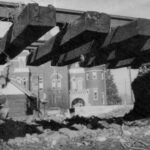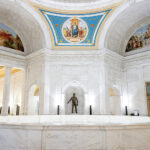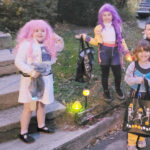West Virginia State Fair turns 100
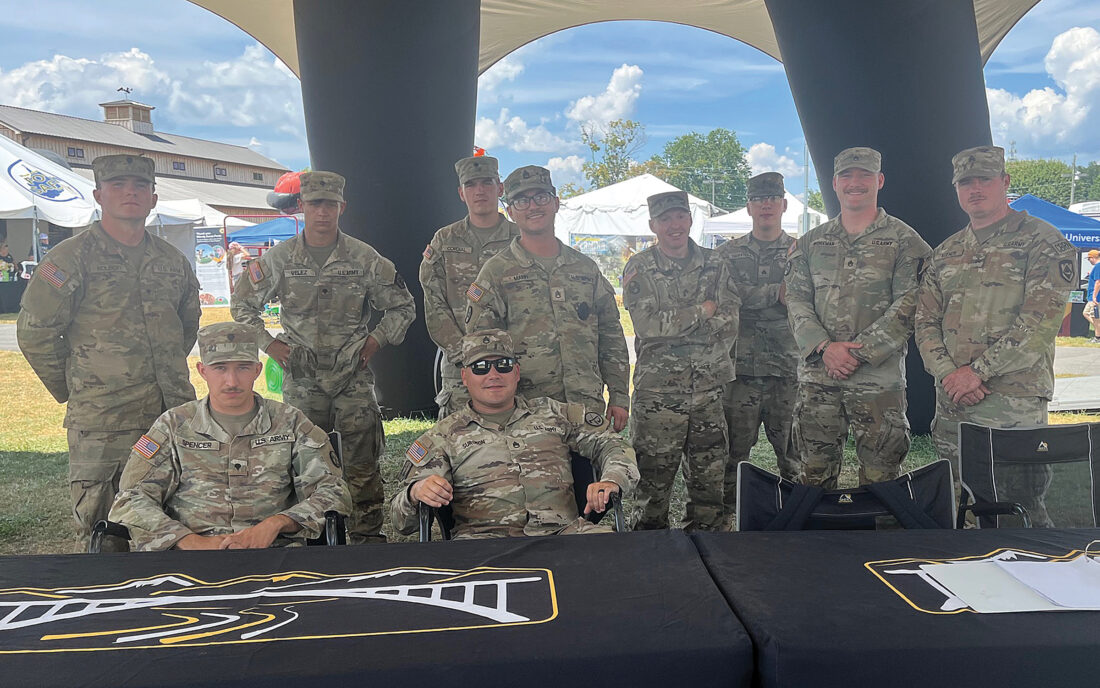
Photos by Toni Milbourne Members of the West Virginia Air National Guard were on hand to assist at the State Fair as well as to give information to attendees.
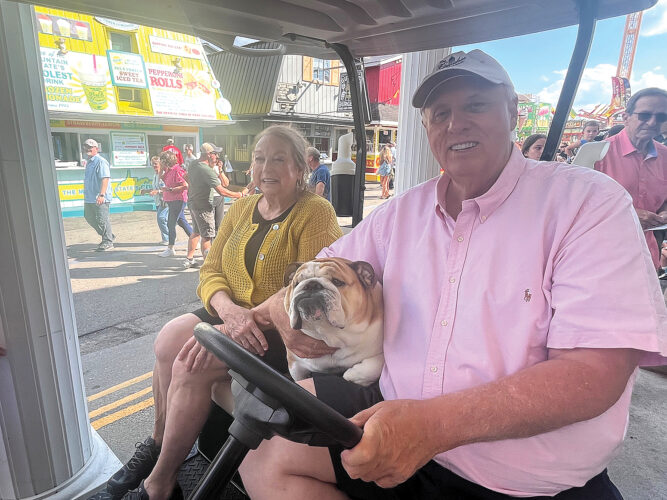
Sen. and Mrs. Jim Justice dropped into the fairgrounds on Friday, along with Baby Dog, to greet those attending the 100th anniversary event.
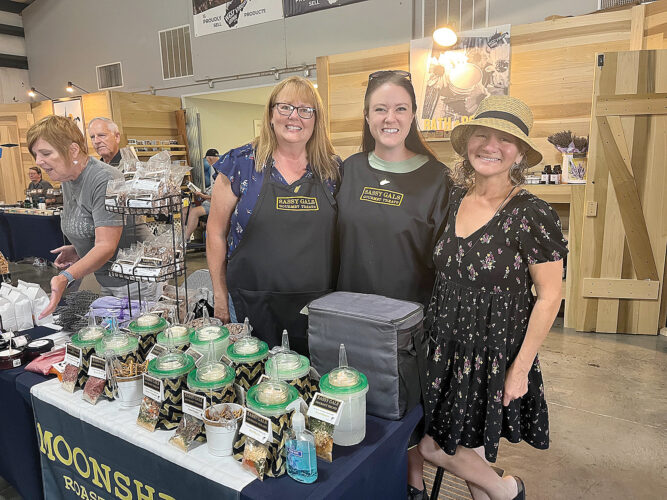
From left are Brenda Burdette and Sarah McCoy with Sassy Gals Gourmet Treats located in Ripley, and Jennifer Maghan with Black Dog Coffee from Kearneysville at their booths at the State Fair.
FAIRLEA — The 100th State Fair of West Virginia, held from Aug. 7 to 16, concluded with record-breaking attendance and a diverse lineup of entertainment, marking a century of tradition and community celebration.
This milestone event attracted over 200,000 visitors, surpassing previous attendance records and underscoring the fair’s enduring popularity. The fair’s economic impact on the state was estimated at $16.9 million, reflecting its significance as a major cultural and economic event in West Virginia.
Helping secure the profitability of the event were multiple concerts and shows throughout the week included TPAIN on Aug. 7; Kansas and 38 Special on Aug. 8; Buckin’ B Bull Ride on Aug. 9; Zach Top with special guest Cole Goodwin on Aug. 10; Cornell Gunter’s Coasters, Drifters, and Platters on Aug. 11; Nate Smith with Preston Cooper who appeared Aug. 12; Wyatt Flores with Kashus Culpepper on Aug. 13; and Lauren Daigle with Franni Cash on Aug. 14. Comedian Jeff Dunham had the crowds rolling with laughter on Aug. 15 and the season’s series concluded on Aug. 16 with Miranda Lambert and Myles Morgan.
In addition to all of those special events, the fair featured a comprehensive schedule of events, including agricultural exhibitions, livestock competitions and various other family-friendly activities. Carnival rides filled a significant portion of the fairgrounds and had those young and old sharing some wild rides as well as some tame ones for the less adrenaline-motivated.
Guests could also peruse several buildings housing vendors of all types — many of them West Virginia specific. Crafts, foodstuffs, animal treats and more could be found throughout the grounds. Whether one wished to do some shopping or just see what was out there and even watch some demonstrations of how things are made, there was something for everyone.
Officials at the State Fair of West Virginia were pleased to offer a commemorative poster for the centennial celebration. The poster was created by renowned artist and long-time supporter Robert Tuckwiller, a native of Greenbrier Valley who is said to have strong family ties to the fair.
The fair’s success was attributed to its blend of traditional agricultural showcases and contemporary entertainment, appealing to a broad audience. This combination ensured the fair’s continued relevance and popularity, securing its place as a cherished annual event in West Virginia’s calendar of events. The 100th State Fair of West Virginia stood as a testament to the state’s rich agricultural heritage and the community’s enduring spirit of celebration.
***
From an original two-acre plot in downtown Lewisburg where the West Virginia State fair began to drawing crowds in the hundreds of thousands, the yearly event has grown into one of the Mountain State’s most beloved traditions.
The fair’s roots trace back to 1854, when the Greenbrier Agricultural Society held its first annual gathering. Early fairs highlighted livestock, crops, homemade quilts, artwork and even penmanship. In one of its most famous moments, an iron gray yearling colt, later known as Traveller, the famed horse of Confederate General Robert E. Lee, won a ribbon there.
By the 1880s, the event had taken on new energy as the Greenbrier Valley Industrial Exposition in Alderson. From 1883 to 1889, fairgoers saw technology displays, horse races and the kinds of competitions that would become staples for the fair for decades to come.
A group of local cattlemen officially formed the Greenbrier Valley Fair in 1921. Purchasing 40 acres between Lewisburg and Ronceverte, now known as Fairlea, they quickly built a racetrack, stables, barns, a grandstand and exhibit halls. Admission was just 75 cents for adults for an event that featured everything from acrobats to fireworks, as well as livestock shows.
In 1941, the West Virginia Legislature officially dubbed the event The State Fair of West Virginia. During the war years from 1942 to 1945, the fair was on hiatus, but it returned in 1946.
The decades that followed brought expansion and modernization. Additional property in the 1950s allowed for larger events, and a modern grandstand in the 1960s accommodated bigger names in entertainment.
While smaller in scale than state fairs in more populous regions, the Fairlea gathering became known for its blend of agricultural traditions, harness racing, carnival rides, political displays and star-studded nightly concerts. In 2006, paid attendance topped 174,000, with an economic impact of $8.9 million in Greenbrier County.
In 2025, the fair marked its 100th anniversary. Though technically older, thanks to its pre-1921 predecessors, this milestone celebrates a century of the Greenbrier Valley Fair’s formal charter. A commemorative poster by artist Robert Tuckwiller honored the occasion, reminding West Virginians of the fair’s enduring place in the state’s culture.
The State Fair of West Virginia continues to offer a mix of concerts, carnival rides, agricultural exhibits, food and family-friendly entertainment that draws thousands in celebration of a long-standing tradition. More than an event, it remains a showcase in many ways including as a classroom for youth in 4-H and FFA, and a source of community pride for generations past, present and future.


